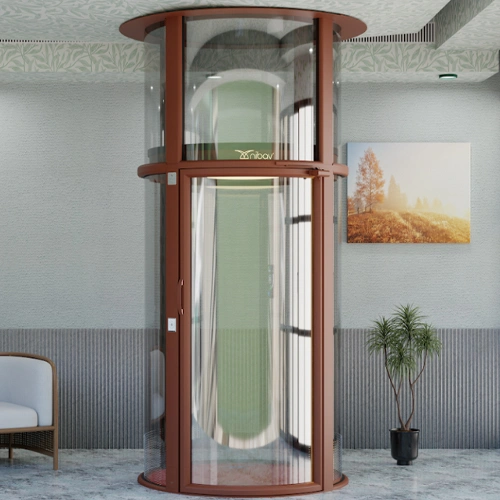
Table of Contents
- Understanding the True Cost of Home Lifts in Malaysia
- 2. Number of Stops: More Floors, More Cost
- 3. Lift Type: Technology Drives the Price
- 4. Size & Capacity: Bigger Lifts, Bigger Investment
- 5. Design & Finish Customizations: When Looks Drive the Cost
- 6. Civil Work & Installation Requirements: The Hidden Cost of Structural Work
- 7. Safety Features & Certifications: What Malaysians Should Know
- 8. Maintenance & After-Sales Support: Long-Term Value You Can’t Ignore
- Final Thoughts: Investing Wisely in Home Lift Solutions in Malaysia
Understanding the True Cost of Home Lifts in Malaysia
As homes in Malaysia have become taller and more vertical, the use of home lifts has also become less of a luxury and more of a necessity. Especially if we’re talking about aging in place, convenience, or future-proofing your property, installing a lift in your home is a great value addition. But, before you make that choice, there is probably one question every homeowner wants to know: “how much will it cost?”
Honestly, home lift prices in Malaysia depend on a wide variety of factors (e.g., type of lift, number of floors served, design finishes, the layout of your home, etc.), and whilst many providers offer “starting from” quotes, your final price may turn out to be somewhat different after all factors are taken into account.
This guide will examine all the factors affecting home elevator prices to give you a better idea of what to expect in terms of budgeting for your home lift price in 2025. Whether you are looking at compact vacuum lifts or luxury glass elevators, you will be able to see the Malaysia residential lift cost breakdown, so that you can make a wise investment.
2. Number of Stops: More Floors, More Cost
The number of floors your lift will have to traverse is one of the most important factors in determining home lift prices in Malaysia. Two-stop lifts (a ground-to-first-floor basic setup) are the cheapest option, but they get more expensive with every other stop due to additional materials, wiring, and time to build and install.
With houses getting taller in metropolitan areas like Kuala Lumpur and Penang, three and four-story houses are increasingly popular. More stops mean needing a taller shaft, a more powerful motor, and better safety and control technology. As expected, this also means the cost of the lift installation increases too.
Fortunately, there are modular options out there like Nibav Malaysia’s vacuum lifts. These systems are intended to be added to over time to scale with your house. You can start with the basic two-stop option and expand at a later time without any substantial remodelling. It’s future-ready and keeps your initial investment flexible, while you can upgrade more relaxed down the line.
3. Lift Type: Technology Drives the Price
Not all lifts are built the same. The type of lift you choose—hydraulic, traction, or vacuum—has a major impact on home lift prices in Malaysia. Each system comes with its own technical demands, space requirements, and installation costs.
Hydraulic lifts, for instance, require a pit and machine room, which means more civil work and long-term maintenance. Traction lifts use cables and counterweights, making them better suited for larger properties but at a higher setup cost. Then there’s the modern, space-saving alternative: vacuum lifts.
Vacuum lifts, like those offered by Nibav Malaysia, are gaining popularity for good reason. These lifts use air pressure instead of complex mechanics, don’t need a pit or machine room, and can be installed with minimal disruption. They’re ideal for compact homes and cost-effective for multi-level living.
Choosing the right technology isn’t just about performance—it’s about how well it fits your home, your lifestyle, and your budget.
4. Size & Capacity: Bigger Lifts, Bigger Investment
When it comes to home lift prices, size does matter—but not always in your favour. The larger the lift cabin and the higher its capacity, the more materials, engineering, and installation work it requires. That means a higher price tag.
In Malaysia’s urban homes, space is often a premium. That’s why compact models are in demand—they deliver functionality without demanding major floor space. For example:
Nibav’s compact vacuum model requires only 1000 mm of clear space, comfortably fitting up to 2 passengers.
Their larger, wheelchair-friendly version needs 1430 mm and can accommodate up to 4 users or 1 wheelchair user.
While larger lifts offer more room and flexibility, they can also involve more structural changes to your home, from floor reinforcements to custom shafts. On the other hand, a compact vacuum lift delivers sleek mobility and cost efficiency with minimal renovation.
So, the key is choosing a size that balances your present needs and future accessibility—without overspending.
5. Design & Finish Customizations: When Looks Drive the Cost
Your lift isn’t just a transport tool—it becomes part of your home’s architecture. And that’s where custom finishes make a difference, both visually and financially.
Standard vs Luxury Finishes:
Standard finishes: Powder-coated steel frames, acrylic panels, basic flooring. Clean and functional—ideal for practical homeowners.
Luxury upgrades: Tinted or clear glass cabins, brushed metal accents, LED ceiling lights, and customized flooring for that premium touch.
Why It Affects the Price:
Every aesthetic detail—from color-coordinated lift cabins to panoramic glass panels—adds to manufacturing time, material costs, and installation complexity. While it won’t change the core function of your home lift, it will reflect in your final invoice.
Malaysia’s Style Preferences:
Modern condos in KL lean towards sleek glass elevators with minimalist finishes.
Landed properties often opt for warmer tones, matching lift interiors to existing home decor.
Design adds personality—but it also affects how far your budget goes.
6. Civil Work & Installation Requirements: The Hidden Cost of Structural Work
How your lift integrates with your home matters just as much as the lift itself. Traditional lifts often require significant structural adjustments. And that means time, permits, and money.
Traditional Installations:
- Require pits, machine rooms, or shaft walls.
- Involve civil modifications, wiring, and structural reinforcements.
- May take weeks or months—especially in retrofit projects.
Nibav’s Plug-and-Play Advantage:
- No pit or machine room needed.
- Self-supporting structure—can be installed in almost any Malaysian home.
- Fast installations (as little as 4–5 days) mean reduced labour and less disruption.
Why It Impacts Home Lift Prices:
Labour, permits, and extended timelines all add up. Choosing a model that simplifies installation can shave thousands off your overall cost—not to mention the convenience of faster completion.
7. Safety Features & Certifications: What Malaysians Should Know
Safety is non-negotiable. But advanced safety features often come at a premium—especially if you want peace of mind built into every ride.
Essential Features to Expect:
- Auto descent during power failure
- Battery backup for emergency landings
- Door interlocks for safe entry/exit
- Overload sensors and emergency stop alarms
Certified Brands Means Smarter Spending:
Choosing a certified elevator brand in Malaysia like Nibav ensures your home lift:
- Meets Malaysian and International building codes
- Passes safety inspections
- Operates reliably in local conditions
Why It Matters for Pricing:
Cheap imports or unverified systems may lack safety features—leading to costly upgrades later or even failed inspections. Choosing a lift with built-in safety mechanisms and proper certification protects both your budget and your family.
8. Maintenance & After-Sales Support: Long-Term Value You Can’t Ignore
The initial purchase is just one part of the cost. Reliable after-sales service is what keeps your lift running—and your investment protected.
What Ongoing Costs Look Like:
- Annual maintenance: Varies depending on your lift type and service plans offered.
- Parts replacement: Motor components, seals, or control boards may need attention over time.
- Service plans: Premium brands offer scheduled maintenance and warranty extensions.
Why Reliable Brands Win Long-Term:
Nibav Malaysia’s service model includes:
- Locally available technicians
- Readily stocked spare parts
- Transparent service packages
- Responsive customer support
A cheap lift with poor after-sales support can become more expensive over time. A reliable home lift company in Malaysia saves you stress and money through the years.
Final Thoughts: Investing Wisely in Home Lift Solutions in Malaysia
Home lift prices in Malaysia are influenced by more than just the product. From the type of technology to how many floors your lift serves, every detail—design, safety, installation, and support—shapes your total investment.
If you’re comparing the cost of home lifts in Malaysia, remember this:
- Cheaper isn’t always smarter—especially if it lacks certification or after-sales support.
- Investing in a certified elevator brand in Malaysia means safer performance, long-term reliability, and peace of mind.
- Modular, self-supporting systems like Nibav’s vacuum lifts offer a modern, efficient solution—perfect for Malaysian homes of all sizes.
Whether you live in a compact city residence or a multi-level landed property, understanding these factors affecting home elevator prices helps you make a smarter, future-ready decision.
Ready to Elevate Your Living Experience?
At Nibav Malaysia, we make premium home lifts accessible—with compact designs, panoramic glass options, and unmatched safety features. Explore the new standard in vertical mobility—efficient, elegant, and engineered for Malaysian living.
Visit our showroom or book a free consultation to explore your options today.
Let comfort rise with you.
